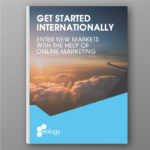
Google is no longer the only relevant search engine; AI-based systems are changing the way we search for and find information. Read our detailed assessment now. ... Continue reading
| 04 min |


| 17 min |
International SEO – When and why should you do it
Other countries, other customs – Know your target markets
(Sub-)directory, subdomain or a country-specific top-level domain – that is the question here
Chances and risks of international SEO
Conclusion
E-commerce grows and grows – the market of the own country is quickly no longer sufficient. For this reason, many companies look beyond their own national borders to enter worldwide markets. If you want to be internationally visible, you should make your website multilingual. Only in this way can you be positioned globally in the SERPs. This in turn means that products or services of a company should also be made searchable abroad to be found internationally. The problem is that this is easier said than done! Each country has its own quirks – whether it is the different handling of data protection, different visual representations, the search behavior in the respective country or even ranking factors of the search engines. To be successful internationally, you should know what matters in the countries you want to expand to in order to make the right adjustments and optimizations.
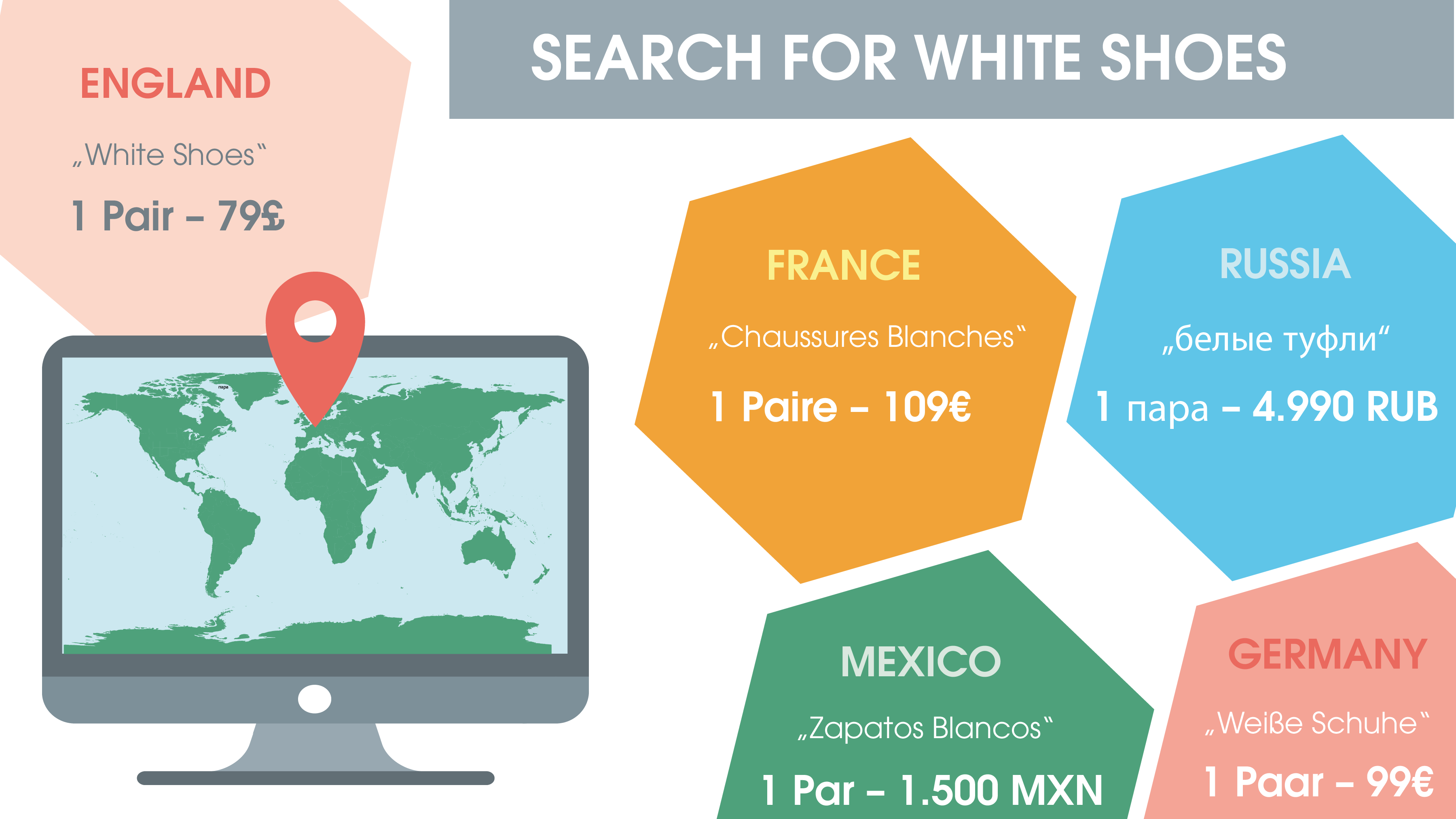
Not all companies automatically go for an internationalization of their own website, and that is a good thing. Facts: Not everyone needs a website that can be found outside their home country. On the contrary, sometimes it is even more important to rely on local search engine optimization. This applies, for example, to the carpenter or the grocery store around the corner. Some companies thus limit themselves to a specific local or regional area, while others want to be active beyond national borders. This is where you can start with international SEO to demonstrably optimize your findability. If you adopt your SEO strategy one-to-one for foreign countries, you will quickly realize that you are reaching limits. This is because search engine optimization is different for each country. Depending on the country you want to expand into, you should therefore take a close look at your target markets.
You want everything at a glance? Then get our checklist now to prepare you step by step for your internationalization! You will get a great overview about it:
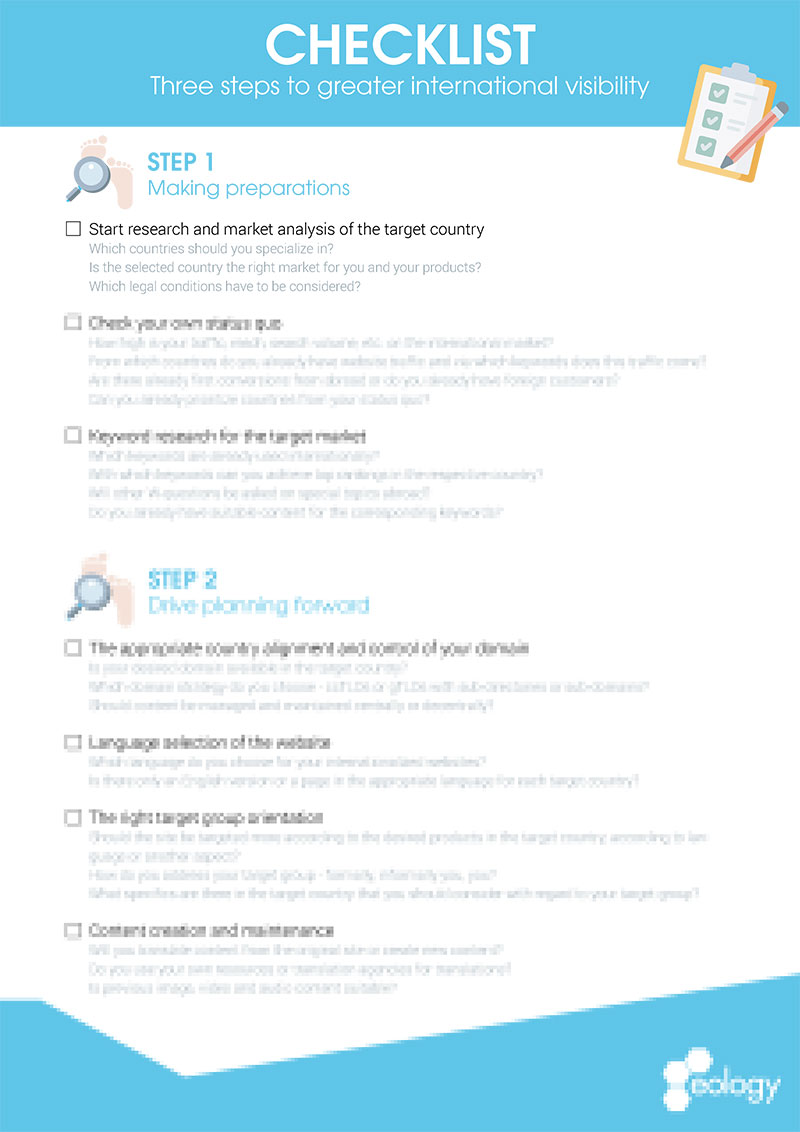
In order to be always perfectly aligned with your target country, you should not only regularly analyze the respective target market, but also your competitors in the corresponding country. This will help you to optimize your global SEO measures.
There are different factors you need to consider when it comes to foreign markets.
If you are in the European search engine market, Google is usually your number one go-to. Even outside Europe, this search engine is standard for users in most countries. However, exceptions prove the rule: In the Czech Republic, the search engine seznam.cz is a strong competitor to Google. In principle, the situation is similar in large parts of the world. Google is the best-known search engine and has the largest market share in many countries, but there are exceptions:
In most other areas, however, there is no real competition for Google, which is why the internet giant largely holds the global market power.
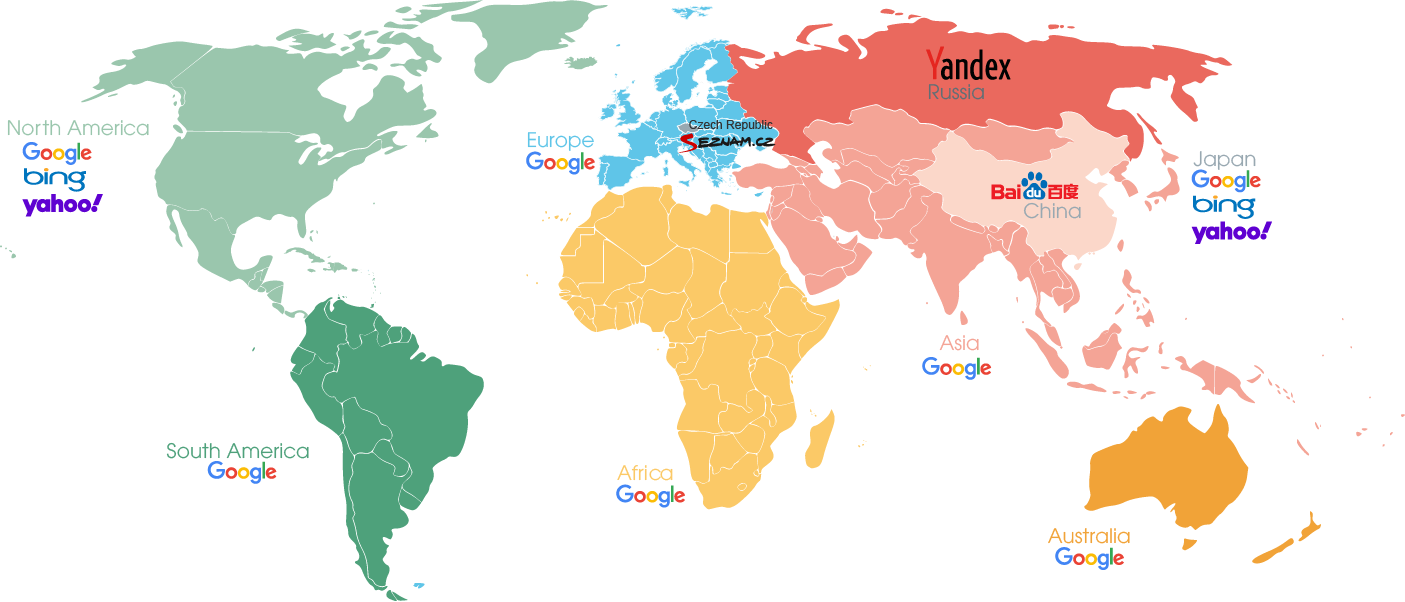
Of course, this is not only about the different terms that different countries have for one and the same word. Rather, you should pay special attention to the following things:
If you know the specifics of each country you want to expand into here, it will be easier for you to optimize your website accordingly.
Not only because of different cultures and religions, you should be careful not to put your foot in it – prejudices and stigmas are out of place everywhere in the world. If you want to grow up internationally, you should know the customs of your target countries well. First and foremost, pay attention to what you present in pictures and graphics. The way you address your target group can also vary from country to country. For example, some countries are less comfortable with nudity than others. Certain phrases, emojis or visuals can also be tricky. Not everything that goes down well with your target group in your home country will necessarily appeal to other nations. Therefore, clarify with native speakers beforehand which taboo topics there are and what you have to pay attention to in particular.
There are various points here that you should look at more closely with the help of a target group analysis:
If you have informed yourself about these points, you already know the respective target group pretty well. This is the only way to create relevance for your product or service portfolio.
Sure, English will get you pretty far everywhere. However, you will find that it is not always the best way to communicate if it is not the native language of your counterpart. English is now only the third most spoken native language. First and second place are occupied by Mandarin Chinese and Spanish. Of course, as a second language, about a billion people speak English, but it is certainly helpful to internationalize your team if you want to go global. Native speakers make it easier for you to get started in a foreign country.
Once you have conducted an international market analysis, it is time for a global market strategy. Here, all the values that you looked at in the previous step are included. They are also the basic building blocks for your international SEO. In addition, you can think about whether you want to rely exclusively on directories or create your own country pages. For this, you need a sophisticated domain strategy to achieve the best possible success.
Your domain strategy can look very different. First of all, it is important to clarify which types of domains exist. This is explained relatively simply with the help of an example:
Directories and subdomains, however, are only useful if the domain is not a ccTLD. Instead, you need so-called generic top-level domains (gTLDs). These are domain extensions like “.com”, “.net” or “.blog”, which only become country-specific through the use of subdomains or directories.
Each of the domains has advantages and disadvantages that should be taken into account when you think about your domain strategy.
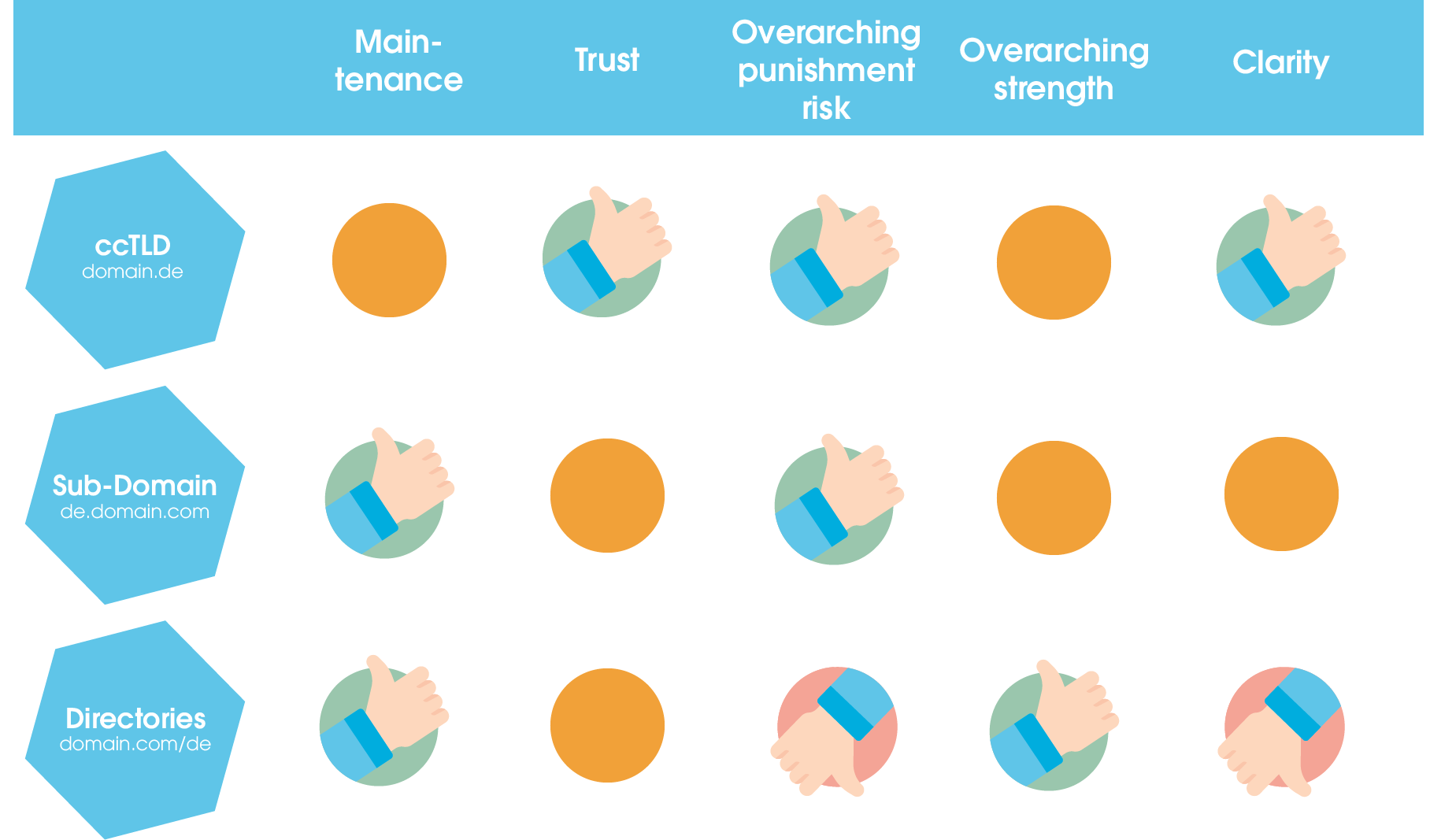
No matter what you decide, you should always make sure that you do not mix the different variants. So make sure that you do not switch between directories and subdomains. You also have to keep in mind that an internationalization for sub-directories only makes sense with gTLDs as the main domain.
For detailed information about international domain strategy have a look at our eo:magazine article “Visible and successful with the right internationalization and domain strategy“!
For building your backlink profile, directories also make the most sense, because the linkjuice of the built links to the part of the top-level domain also reaches the other country websites. How exactly you do international link building, you can also read in our whitepaper. There you will learn exciting insights about:
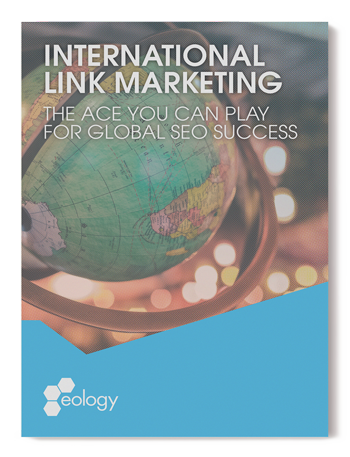
International SEO is a really labor-intensive and time-consuming undertaking. You will surely ask yourself: “Is it worth the effort?”. Of course, this has to be weighed up. Not every company wants to expand its awareness beyond its own national borders. However, if your goal is to become internationally successful and present, you have no choice but to optimize for all nations and markets in which you want to be found. Of course, this involves some chances and risks.
In addition to opening up new markets, there are other advantages of expansion. These are obvious:
However, you should make sure that the quality of your website and its content does not suffer from the fact that you are now serving several countries at once. There is also the risk that you will not do well in one market. Often it is difficult to enter a market as a “newcomer”, which contains already established companies that are appreciated by the customers. So you first have to gain the trust of the customers.
It helps if your team is international. A few native speakers in the target country can always give you better insights and tips about the country. In addition, they speak the local language, which is a big plus when you want to get in touch with new business and cooperation partners. Sure, English will get you pretty far in most countries, but your counterpart will surely feel more comfortable if he can just speak in his native language without having to search for words or worry about the right grammar and pronunciation.
A hreflang attribute is there to let Google know about the page architecture of your internationalized website. This way, the search engine understands the structure better and can better assign content and languages to the respective country. The attribute is inserted in the head of your HTML and shows Google that the pages contain the same content (sometimes only in different languages), but that this is justified. It tells Google about the different language versions of your website, but without declaring it as duplicate content. By using the link attribute rel=”alternate” hreflang=”…” you avoid penalties, because this markup signals to the crawler that it is about the respective geographical adaptation of your website and not about duplicate content.
The attribute looks like this in detail: <link rel=”alternate” href=”https://www.eology.de” hreflang=”de-DE” />
If you break the code down into its individual parts, you will find the following components:
You can also easily create the code using a hreflang tags generator. Please note that there is rarely only one hreflang within a global website. Mostly, there are different language versions directly, which are all included via this attribute. Additionally, you should identify the main page (in our case the German website) also with the help of a hreflang. So you have always at least two hreflang versions, once the original page and then additionally the language version of this.
You want to learn more about the hreflang-attribute? Feel free to jump to our hreflang-guide!
Maybe you just thought of it yourself: The English-speaking area (England, USA, Canada, Australia, etc.) and the Spanish-speaking area (Spain, Latin America, etc.) of course work similarly. Here, too, you can avoid duplicate content with the help of the hreflang attribute. Nevertheless, in all cases it should be noted that the language is basically the same, but depending on the nation and region, there may be terms that differ from classic High German, British English, etc. So again, pay attention to national customs to avoid putting your foot in your mouth.
The hreflang attribute is suitable for multilingual websites that are active on different markets in different countries. There are two cases where hreflang is of particular importance:
As you can see, you have a lot of plans if you want to become active beyond national borders. International SEO helps you to become globally visible. Insights into your target country are essential for a professional appearance. An international team helps you to understand the individual characteristics of each country. Employees who come from the target country into which you want to expand make it easier to establish contacts and give you insights into the respective mentalities of the target country. This increases professionalism and is therefore just as important for success as market analysis and strategic planning.
Olga Fedukov completed her studies in Media Management at the University of Applied Sciences Würzburg. In eology's marketing team, she is responsible for the comprehensive promotion of the agency across various channels. Furthermore, she takes charge of planning and coordinating the content section on the website as well as eology's webinars.
Plans of internationalization? Then you should not miss this content!



